Backcountry Cooking
Chock-full of easy and tasty recipes plus loads of techniques and tips from the pros, this book will turn any camp-cooking slouch into a gourmet outdoor chef.
Seattle Post-Intelligencer (Seattle, WA)
Combines Millers considerable wilderness expertise with the spice and sass of professional guides and adventurers.... Millers own kitchen craft and exacting methods are evident when you try out the recipesand youll want to!.... If you disdain fast food on principle, be prepared to broaden your palate.
Anyplace Wild TV

Backcountry Cooking
FROM PACK TO PLATE
IN MINUTES
Dorcas Miller

Table of Contents

Introduction
Ive often heard outdoorspeople say, I lived on ramen noodles or I ate instant oatmeal for breakfast and a box of macaroni and cheese every night. Filling and inexpensive, but dull. There are also folks who rely on freeze-dried meals. Convenient but expensive. The irony is that it is possible to make meals that are not only delicious but quick and simple to fix on trail.
This book is about how to do just that. gives tips on low-fuel cooking, dehydrating food at home, baking on trail, keeping a Leave No Trace backcountry kitchen, and forestalling problems with critters.
The Read This First information that precedes the recipes (see are stocked with recipes to tickle your taste buds and warm your heart. Some of the recipes are as easy as adding boiling water. Others, like pizza, require patience but reward you handsomely.

With meals that are quick and easy to prepare, you can spend less time in the backcountry kitchen and more time relaxing.
The benefit of putting together your own meals, instant or not, is that you get to eat what you want to eat, not what someone else has decided to sell. You can include your own particular comfort foods (chocolate, java, Earl Grey tea, mashed potatoes, hard candy, miso, or whatever makes you feel snug and secure). You can decide the amount youll eat, rather than having to adjust to what the package offers, and you can use the nutritional information included with each recipe to make sure you get enough calories. And, for those who see meals as a social occasiona time to share insights and laughs about the daythere are great opportunities for putting on a real spread.
What Kind of Cook are You?
An Ascetic: You go in for minimal prep and minimal cookingenergy bars, PB&J, and boiling water for freeze-dried meals.
A Pragmatist: You carry one or two pots, use those handy supermarket packages of Chinese noodles and pasta with sauce (or equivalents), and have developed your own formula for efficient eating.
A Gourmand: You take a fullscale cook kit and plan food for its pleasure, flavor, and variety; you enjoy the process of cooking and food is a critical part of the trip for you.
Whether you classify yourself as an ascetic, a pragmatist, or a gourmand reveals a lot about your take on food, as I discovered when I invited trail veterans to share their insights on cooking in the backcountry. I asked long-time trail denizens about their approach to food, their favorite meals, and their hard-won tips for the trail kitchen. I also asked food providers about their views on backcountry trends and the challenges they deal with daily when providing food for hungry outdoorspeople. The shrewd, funny, and enlightening responses from these trail-wise cooks appear as Hot Tips scattered throughout the chapters.
As for backcountry style, it seems fair that I answer that question myself. Im a combination pragmatist and gourmand. Im willing to put in time at home to dry food and assemble ingredients, so that when Im on trail I dont have to fuss. When I go out with my husband, Ben, we eat very simplyhot or cold cereal and bagels for breakfast, an array of snacks for lunch, a one-pot meal for dinner, and sometimes something sweet for dessert. On trips with other people, though, I plan a basic rotation of dishes and garnish it liberally with special touches.
My favorite recipes? For breakfast, Apricot-Pecan Cream Cereal and Hash Browns with Scrambled Eggs. For lunch, Im partial to having lots of options: nuts, dried fruit, a carbo (bagel, flatbread, or crackers), a spread, cheese, pretzels, fruit snack bars, homemade jerky, and maybe something off-beat like dulse (a seaweed). Pemmican Soup, Corn Chowder, and Hot Almond Smoothies are great side dishes. I like too many of the dinners to choose, though I do lean toward Crustless Russian Vegetable Pie and the wraps. For desserts, Mincemeat Pudding and Coconut-Mango Rice Pudding are super easy (and super tasty), Some More Smores are decadent, and the boil-in-a-bag recipes are fun.
As for favorite gadgets, I prize my dehydrator at home and my insulated bowl and mug on trail.
PART I
SKILLS FOR BACKCOUNTRY COOKING


 CHAPTER 1
CHAPTER 1

Know Your Ingredients
For food we had flour, beans, bacon, tea, coffee, sugar, condensed milk, rolled oats, butter, dried fruit, sweet chocolate, beef extract, rice, and desiccated potatoes. To cook with we had brought two small alcohol stoves and two gallons of denatured alcohol. Emergency rations and the like were not obtainable.... On taking to the glacier, we had dispatched two men to Mr. Barretts cache for a Yukon stove, and the next day made use of the last fuel we should find, the small willows about us, to bake [fifteen pans of] biscuits and boil [twenty-five pounds of] beans for the entire trip.
Dora Keen, Mountain Climbing in Alaska:
The First Expedition to Mount Blackburn, Appalachia, 1912
Just as siting your tent is location, location, location, preparing backcountry meals is ingredients, ingredients, ingredients. Finding ingredients is much easier than it used to be because supermarkets are carrying more products that are uniquely suited for trail lifeproducts such as couscous, bulgur, instant refried beans, dried hummus, instant hash browns, precooked bacon, and all types of dried fruit and vegetables.
If you are willing to order food by mail or visit your local Asian market and health food stores, the options multiply quickly. You can get freeze-dried and dehydrated vegetables, freeze-dried meat, and lots of unusual ingredients, such as coconut cream powder and blue cheese powder, to add zest to backcountry eating. Mail order is, after all, only a phone call away.

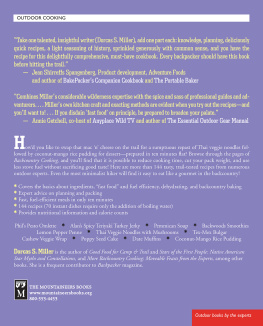






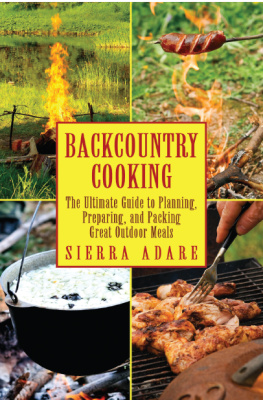
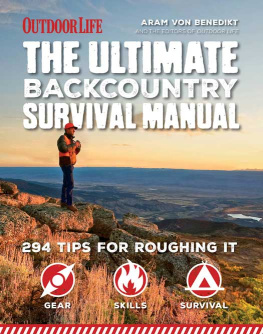

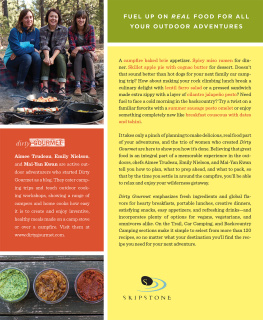
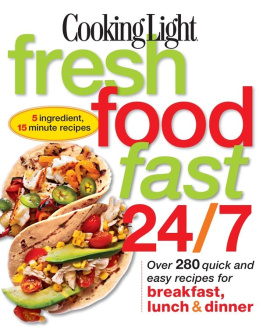
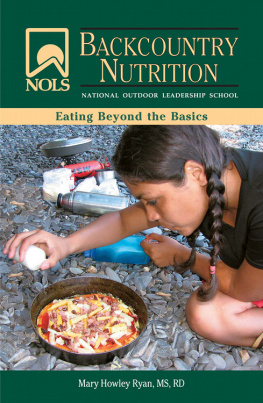
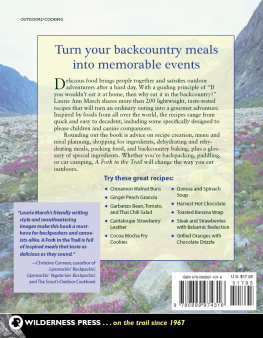
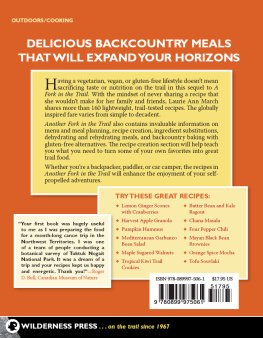







 CHAPTER 1
CHAPTER 1